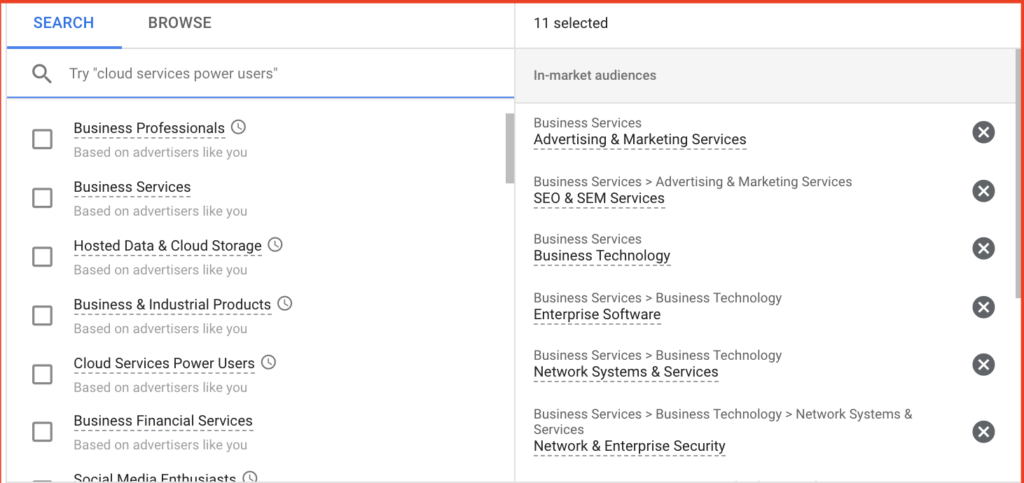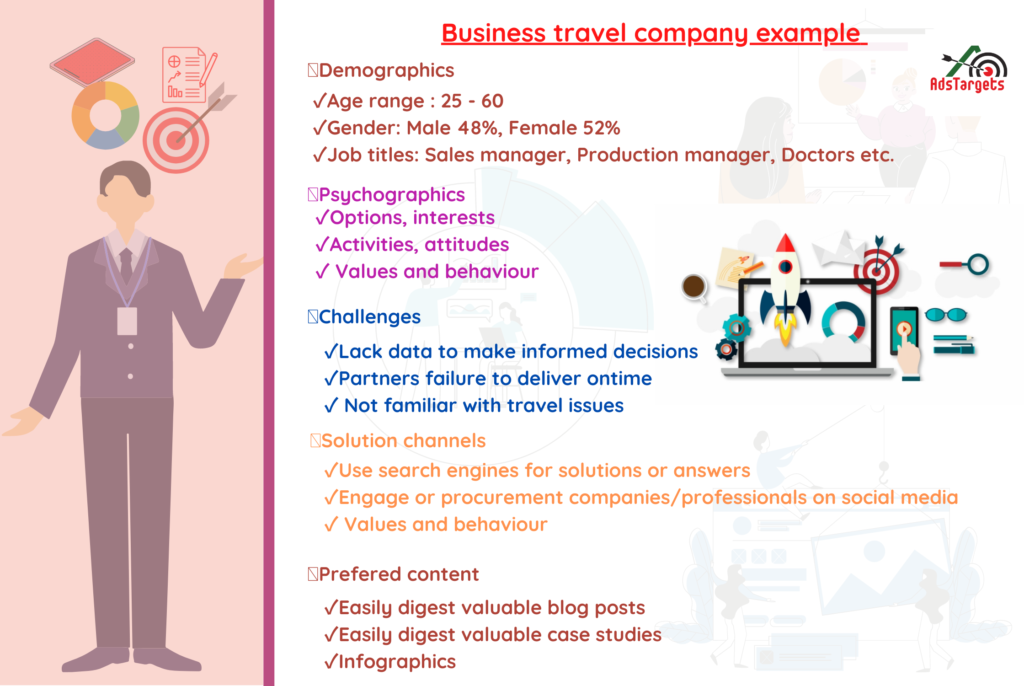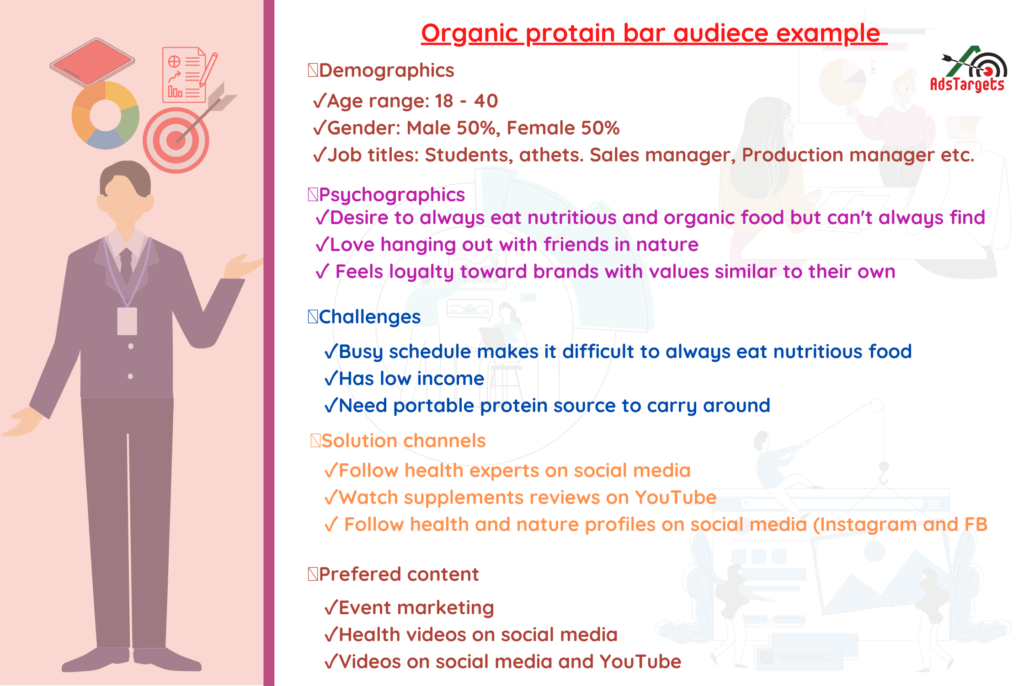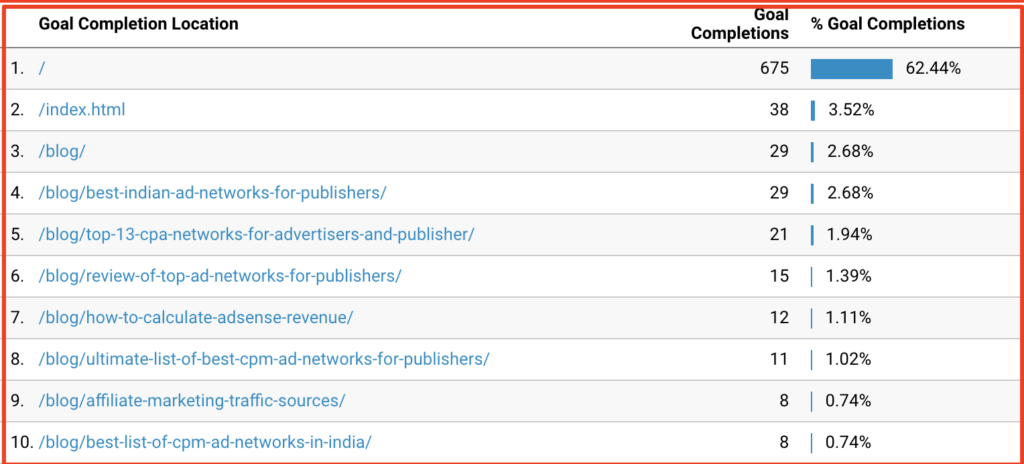Audience targeting is one of the most important aspects of digital marketing.
On all online advertising platforms, search engines, and social media platforms, the way you target your audience will have a great impact on the outcome of your marketing campaign.
As a marketer, you might probably want to have a clear understanding of targeting options before launching your campaign.
This is because targeting the right people is the only way to ensure you spend less and have a high return on investment (ROI) or return on ad spend (ROAS).
In a way, most digital advertising platforms have hundreds of audience targeting options put together which makes it confusing for newbies in the business.
To clear some of these confusions, we write this article discussing this topic in detail to enable you to understand what options you have and how to effectively target the right audience to achieve your digital marketing / online advertising goal.
So let’s jump into it.
Table of Contents
ToggleWhat is Audience targeting?
Audience targeting is a way of identifying a group of people based on demographics, interests, and other factors to show them specific ads or create specific content that is aimed at solving their issues.
Demographic data such as location, behavior, gender, income status, educational level, ethnicity, etc. are very important aspects of targeting an audience while psychographics makes it even more effective.
There are many advantages to why digital marketers should segment and target audiences.
The most important one is preventing your ads from showing to an audience that doesn’t care about your products or services while making your ads more relevant and effective to ultimately increase your return on ads spend (ROAS).
One way of making your ad targeting is to have a clear understanding of who your target audience is or is, which location, and what might be of interest to them.
Audience targeting options
There are several audience targeting options depending on the advertising platform whether its Google ads, Facebook ads, or AdsTArgets Ads, here are some of the most important and effective targeting options.
Demographic targeting
These involve the age range of your target audience, gender, languages, location, relationship status, work or job title, life events, political views, ethnicity, parent, and so on.
This is one targeting option that is available on all the major ad networks. It’s the first step in defining who your target audience is before later scaling down using other targeting options.
It is vital you distinguish your audience at this level before going down further on other targeting options.
Keywords Targeting
Probably one of the most popular audiences targeting options on Ad networks like AdsTargets, Google, and many others.
Keyword targeting is used for both search and display advertising campaigns which enable the marketer to target people searching for specific services, products, or information using related or exact keywords.
For Google Advertising, you can choose to target people with “exact match keywords”, “phrase match keywords” and “broad match keywords” on Google ads.

Psychographics targeting
Psychographic targeting here involves targeting your audience based on their interest, activity, and general behavior online.
This type of audience is determined by audience profile details they provided when signing up on social media platforms, the event they attend, the pages they follow, business and industry, family, and friends.
Others include hobbies, fashion, and style, technology shopping, entertainment, fitness and wellness, and food and drinks.
Behavior
Though this comes under psychographic and interest, however, it’s worth separating behavior as it looks at the audience behavior such as travelling behavior, digital activity, charitable donations, experts, job role, residential profile, seasonal, and events.
Other behaviors to look at are their financial status, purchase behavior, media, automotive, and business-to-business activity.
These options are all available on Facebook targeting options to be explored for both Facebook Ads and Instagram Ads for effective campaigns.
Affinity audiences targeting
This targeting option has been used by marketers to target people or a group of audiences that have shown interest in specific topics. It’s used in Google ads mostly on display advertising campaigns.
Google determines this set of audiences based on their online behavior such as frequent visits to specific websites and search history among other related activities.

Remarketing audience targeting
It is vital to understand that, 97% to 99% of the audience that will interact with your ads and visit your website never comes back. This is because by nature humans need to be persuaded.
This is why at the launch of your first ad campaign, you must have a remarketing strategy. This will involve collecting data from your audience and retargeting them with Ads.
here are some of the types of remarketing audiences.
- People who visited your website and didn’t take any action.
- People who took action but didn’t complete their actions.
- A lookalike audience to expand your campaign reach.
- A custom list of emails you may collect as leads,
- A custom list of phone numbers.
- People who frequently engage with your social media content.
Target audience example
Let’s take a look at two examples of a typical audience for a business travel company and an organic Protein bar audience.
We will look at their demographics, psychographics, challenges, solutions, and preferred content they may likely consume.
The first audience is a B2B audience.
Demographics
- Age range: 25 – 60.
- Gender: Male 48%, Female 52%.
- Job titles: Sales manager, production manager, Doctor, etc.
Psychographics
- Options, Interests.
- Activities, attitudes.
- Values and behavior.
Challenges
- Lack of data to make informed decisions.
- Partner’s failure to deliver on time.
- Not familiar with travel issues.
Solutions
- Use the search engine for solutions or answers.
- Engage procurement companies or professionals on social media.
- Values and behavior.
Preferred content
- Easily digest valuable blog posts.
- Easily digest valuable case studies.
- Infographics.

The second example is the B2C audience
Demographics
- Age range: 18 – 40.
- Gender: Male 50%, Female: 50%.
- Job titles: Students, sales manager, production manager, etc.
Psychographics
- Desire to always eat nutritious and organic food but can’t always find it.
- Love hanging out with friends in nature.
- Feels loyalty towards brands with values similar to their own.
Challenges
- A busy schedule makes it difficult to always eat nutritious and organic food.
- Has low income.
- Need a portable protein source to carry around.
Solutions
- Follow health experts on social media.
- Watch supplement reviews on Youtube.
- Follow health and nature profiles on social media like Instagram, Facebook, and Pinterest, etc.
Preferred content
- Event marketing.
- Health videos on social media.
- Videos on social media and YouTube.

These can vary depending on the niche, and business type which is why it’s always important to do thorough audience research before launching your ad campaigns or content marketing strategy.
Audience targeting tips
To get your ad targeting to work effectively, you will need some very important tips to understand who your target audience is and strategically target them.
Here are some of the tips you need
#1. Audience research
The first is getting to know who your target audience is before you can target them. audience research is vital to making this work for your ad campaigns.
Fortunately, there are tools such as Facebook audience insight tools to help you understand your target audience.
This tool also provides you with the opportunity to explore, create and save your audience and use it for ad campaigns.
Here is a video to help you do a thorough audience search with the Facebook audience insight tool and Facebook ad library tool to find your audience and also look at the types of ads your competitors are running.
#2. Use Google Analytics data and webmaster tools
If you have been using Google Analytics and Google webmaster tools, you probably have a great chance of knowing your target audience based on the traffic you get.
This can be done by looking at the sources of your traffic and the behavior of each traffic source.
This will easily give you an understanding of what type of content you should create or what type of Ads you should run.
By looking at these tools, you will also be able to know which keywords to use when advertising or which keywords you should use in your subsequent content curation and marketing.
Google Analytics also gives you the opportunity to create smart goals to monitor who has been converting the most which gives you the opportunity to target such an audience more either with content or ads.

#3. A/B Testing for ad campaigns
Let’s assume at this point you have an idea of your target audience and want to launch an ad campaign.
It’s important you carefully test your audience to understand which group performs best to increase your ROI or ROAS.
A/B testing is a way to split your audience into various groups usually A and B. With Facebook ads, You can slip your audience in various ways such as location, language, cost, and even ad type.
This is to ensure you identify the best performing audience to target them more rather than targeting a large audience that will not perform very well and also cost you more.
A/B testing is an effective way of reducing the cost of advertising and increasing the performance of ad campaigns.
Try it before launching huge ad campaigns.
#4. Remarketing or Retargeting
Whichever way you call it depending on the platform, audience targeting is more effective when you correct reasonable data and retarget or remarket to your audience.
It’s likely 98% of the people that first see your ads and visit your site won’t take action.
Using tracking codes such as Facebook pixel and Google Analytics tracking code will track and organize the data of your visitors for you to retarget them.
It is vital you also use funnels to segment your audience before remarketing to them to ensure more effective ad campaigns.
Conclusion
This article is meant to educate you on various targeting options, examples of targeting audiences for B2B and B2C audiences, and tips to ensure your targeting is more effective.
It is likely most of you have run ads on many advertising networks but did little or nothing to understand your audience before launching those campaigns.
This is meant to help you understand the importance of audience targeting and how you can use it to run better ad campaigns, and create more quality content to engage your audience to increase conversion rate.
I hope it makes sense to you and also you are welcome to share your opinion in the comment section.




